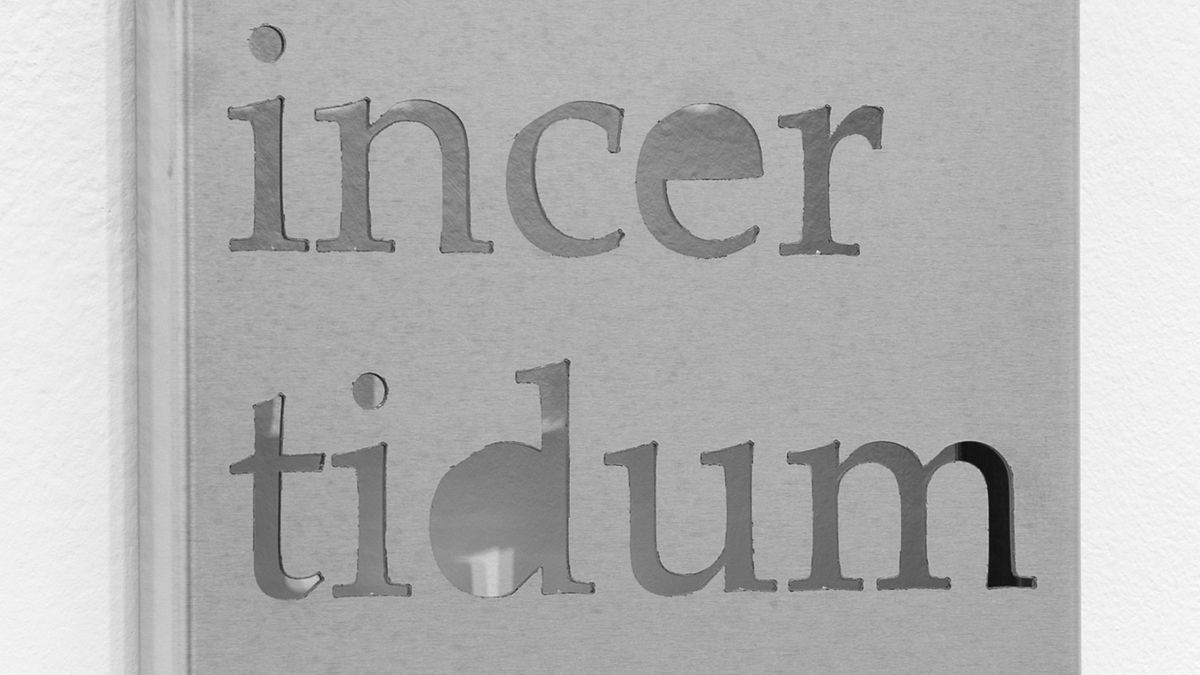The gallery Ruth Benzacar presents these days “Fragility”, An exhibition of Marí Orenz (1936), Marplatense artist residing in France. The gallery last month celebrated its 60 years of experience dedicated to positioning contemporary art and, among its achievements, are the firm links that for decades maintained with the artists of its staff based abroad. Orenz In 1986 he presented his first sample in Ruth Benzacar and, since then, the lampidary words and phrases, weave the plot of thought that sustains the work.
In the center of the room a steel sculpture is built whose superimposed cubic forms hold the letters whose trimmed and draft design configures the word fragility. Orensanz aspires to communication, to rescue the ability to narrate that art possesses, to express the values that she finds between the issues that have been given to us and the most noble human aspirations that she wishes to exalt. Thus it is established that the maximum condition of his artistic work lies in the action of creating and, thus, based on his ideas, mobilizing feelings and stimulating reflections.
What does the term fragility for the artist mean? What does it represent? “A word … a feeling … a moment … something we live … a time … where we are going … how we protect ourselves … Be aware of our fragility … reflect … think … and feel …” The answer, dated between 2024 and 2025, is present in a wall of the room and brings to the present the memory of the phrase that also in draft metal exposed for the first time in Italy in 1974: “Thinking is a revolutionary fact …”. With the forcefulness of an axiom, these words meant a leap in their international career. And today they are in the Memory Park.
The suspensive points used as interrogation signs enhance the viewer’s doubts, an attitude so appreciated in philosophical reflection. From the contemplation of these works, memory awakens and associations flow without obstacles.
“What is permanent? What do we leave through this life?” Add the artist. The gallery owner Orly Benzacar Read a few words that describe the exhibition: “Through a set of sensitive and deeply poetic pieces, Orensanz does not seek to answer these questions in a definitive way, but to open them, inhabit them, let them vibrate in the time and space of the sample. The fragility is revealed here not as a weakness, but as a form of wisdom: a vital principle, a silent philosophy that connects us with the essentials.” And really, the sculptures have in certain aspects, qualities similar to those of a fingerboard, that device that allows you to refine the instruments -in this case, the ideas. However, consulted Orensanz about her philosophical knowledge, she flatly denies this influence. He clarifies then that his works come from the sensations that life itself seeks. To confirm this answer, one of his daughters, Mercedes, guitarist and music by profession. His daughters are three and all artists, they live in Paris. There they expect the filmmaker and theater actress. His father was feminist.
Perhaps as a metaphor of the numerous family trips, the word “cross” appears on a curved bridge. Then there is “the … uncertainty …” and “the strength of the spirit …” The titles of the works, their names, express their own meaning, help to discern their meaning.
Umberto Eco He found in the verse of a Benedictine monk “Stat Rosa Pristina Nomine, Nuda Nuda we have” (“De la Rosa only the name remains, we only have the naked names”, the inspiration to hold his novel “The Name of the Rose.” And as it is known: Echo admired a Borgessource of inspiration of the novel. As he observed his own Echo“De Conteptu Mundo” by Bernardo do Morliacense, a Benedictine of the twelfth century, the inspiration of the poem “El Golem” of Jorge Luis Borges.
“Yes (as the Greek affirms in the crratilo)/ the name is the archetype of the thing/ in the letters of ‘pink’ is the rose/ and all the Nile in the word ‘Nilo’.” The Greek is Plato and, the verses of Borges, point out that, in the dialogues of the “Cratilo”“Made of consonants and vowels/ there will be a terrible name, that the essence/ cifre of God and that the omnipotence/ keeps in letters and syllables.”
To the expressiveness of the names, the artist who gained fame decades ago with her texts and drawings made about Carrara’s marble with the appearance of a ruin, adds symbols such as the eye of the lock, the compass or the bell.
Source: Ambito
I am an author and journalist who has worked in the entertainment industry for over a decade. I currently work as a news editor at a major news website, and my focus is on covering the latest trends in entertainment. I also write occasional pieces for other outlets, and have authored two books about the entertainment industry.




